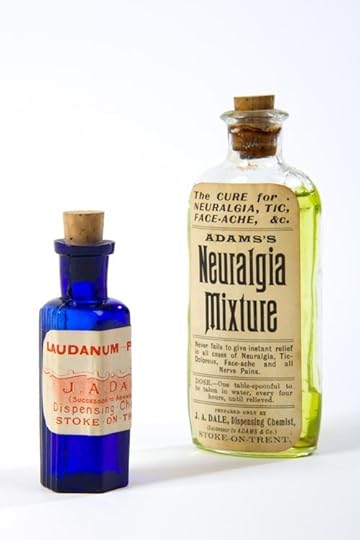Description: During the Victorian period cures for diseases were...

Description: During the Victorian period cures for diseases were often more dangerous than the illness itself.
Laudanum is a notable example of the Victorian cure. Pharmacies could prescribe the dangerous drug over the counter unchecked. It would be taken for many ailments including headaches and menstrual cramps. Some women would even use the drug to obtain a pale complexion, as frailty among women was considered attractive.
However, Laudanum was addictive due to its opium content. Notable addicts were Lord Bryon, Samuel Taylor Coleridge (who wrote the poem Kubla Khan while in a Laudanum induced state), Percy Bysshe Shelley, John Keats and Edgar Allen Poe. The drug is also mentioned in numerous Victorian books; such as Frankenstein, Dracula and The Mystery of Edwin Drood.
Neuralgia was a fairly unknown disease till John Locke in 1677 was asked to help the Countess of Northumberland. Previously numerous doctors had tried to describe the condition but failed to fully understand the illness. Locke was able to decrease the pain the Countess was feeling by treating her with laxative therapy.
Later during the 1700s other doctors built on Locke’s ideas and started to prescribe surgery to help the patient. By 1820 Charles Bell had completed the research by separating the disease from others and actually caused the condition to be named trigeminal neuralgia. The medicine pictured would have been prepared by Dale’s Chemist, Stoke-on-Trent from Adams’s recipe to ‘cure’ Neuralgia.



